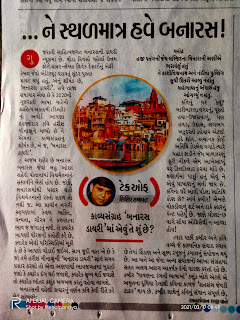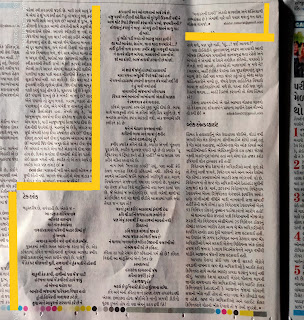Hello readers, welcome to my blog....
I'm living in India. In India there are so many festivals like, Uttrayan, Diwali, Holi and so on. Here I want to talk about festival of colours and new positives vibes. So let's see some story or ritual behind it. Through this we can discuss our own culture and try to know them in more curious way. So here we go....
In India bonfire is known as Holi and Holika Dahan. Now you got the idea that what is Holi or bonfire. So here in this blog I have to give answer of some questions and through them we can do out further discussion too.
1) How many countries celebrate Bonfire? Why? (If you can find reasons . . . are there common reasons?)
Guy Fawkes Night (Bonfire Night) - Englan
On the very night the Gunpowder Plot was foiled, bonfires were lit to celebrate the king’s survival,Every year since, 5 November has been celebrated as Guy Fawkes Night, or Bonfire Night.Fireworks are set off to represent the explosives that were never set off, and it’s traditional to burn stuffed effigies of Guy Fawkes on the bonfire.
Daizenji Tamataregu Shrine’s “Oniyo” - Fukuoka, Japan
Considered one of the three major fire festivals in Japan, the Oniyo Fire Festival at the Daizenji Tamataregu Shrine is an important shrine tradition reaching back 1,600 years.
The fire ceremony marks the culmination of the "Oni-kai" festival, which starts on New Year’s Eve. At 9 p.m. on the night of January 7, the "devil fire" which has been guarded at the temple is transferred to six enormous torches measuring up to one meter in diameter and 13 meters in length. These torches are carried around the shrine grounds by groups of men in loincloths from the six neighboring towns. The fire festival is held to exorcise evil spirits from the town, and spectators are said to be blessed with good luck if some of the embers or ash fall on them.
Jeongwol Daeboreum Deulbul Festival - Jeju, S. Korea
Year of 2021, the festival falls on Tuesday, February 19th, and a variety of events, such as ritual ceremonies, Daljip burning and the performing of folk plays are being planned at a number of locations around Busan.
They are public events with free admission. The main event of the festival, the Daljip burning will take place around moonrise after the opening ritual ceremony. There will be various participation programs for visitors, including New Year’s wish writing, traditional Korean folk games and more.
Quema del Diablo (Burning of the Devil) - Guatemala
Every year of December 7 at sharp 6 o'clock , Guatemalans burn the devil, building bonfires outside their homes to mark the occasion.
The tradition has special significance in Guatemala City because of its association with the Feast of the Immaculate Conception which honors the city’s patron saint.
Up Helly Aa, Lerwick - Shetland Islands, Scotlan
Lerwick’s Up Helly Aa festival is technically a Victorian-era event. It is start to celebrate from the Victorian time.
It was first established by the Total Abstinence Society in the 1870s to give young men something fun to do to mark the end of the yule season. However, the festival has a decidedly Viking flair to it and is equally a tribute to the islands’ Viking roots.
The festival in its current form grew from an even older tradition known as tar barreling, which also took place around New York.
Groups of young men would drag barrels of burning tar through the town, causing mischief along the way. Thankfully, the fire used at the Up Helly Aa festival today is far less destructive!
Sadeh - Iran
Sadeh Festival is an Iranian festival celebrating the discovery of fire by Hushang, the second Shah of the mythological Pishdadian dynasty of Persian Empire. It is celebrated fifty days before the arrival of Nowruz in Iran and parts of Afghanistan and Tajikistan since the Achaemenid Era.
Sadeh means centenary in Persian language. Sadeh is a mid winter festival that was celebrated with grandeur and magnificence in ancient Iran.
Holi and Diwali - India
Here are some names of Bonfire festival which are celebrate in different ways.
2) What are the rituals around such celebrations?
There are different rituals.like on India we have some myth behind Holika Dahan.
3) Is there any story or myth around those celebrations? Write about various myths around bonfire. watch video linked here under to know about the myths believed in by Vaishnavites and Shaivites in India. In which myth do you believe more than the other one.
One story behind it, it is related with Prahald and Hiranyakadhipu. He is the father of Prahalad. He was belongs to the detya (evil) and he didn't like that anyone of his kingdom worship any god or lord Krishna. But pralad did and that's why he tried to kill him so many times, but each and every time Prahalad survived. Then sister of Hiranyakashipu, she has one Stole,if she wear it fire can OT harm her. That's why she sit in fire and also took Prahalad in her lap. But suddenly wind comes and the stole come over to Prahalad and her aunt got dead.
Legends have it that Hushang, the 2nd Shah of the mythological Pishdadian dynasty, established the Sadeh tradition. It is said that once Hushang was climbing a mountain when all of a sudden he saw a snake and wanted to hit it with a stone. When he threw the stone, it fell on another stone and since they were both flint stones, fire broke out and the snake escaped. This way he discovered how to light a fire. Hushang cheered up and praised God who revealed to him the secret of lighting a fire. Then he announced;
“This is a light from God. So we must admire it.”
Conclusion
All over the world there so many different cultures rituals, and traditions. People celebrate same festival but with different reason and tradition. Here above one of the example of it. Festival gives us new energy and positive views. We celebrate all festival with family and friends, to be with them it is also a learning event too.so festivals are important for enjoyment and l to learning something.






















